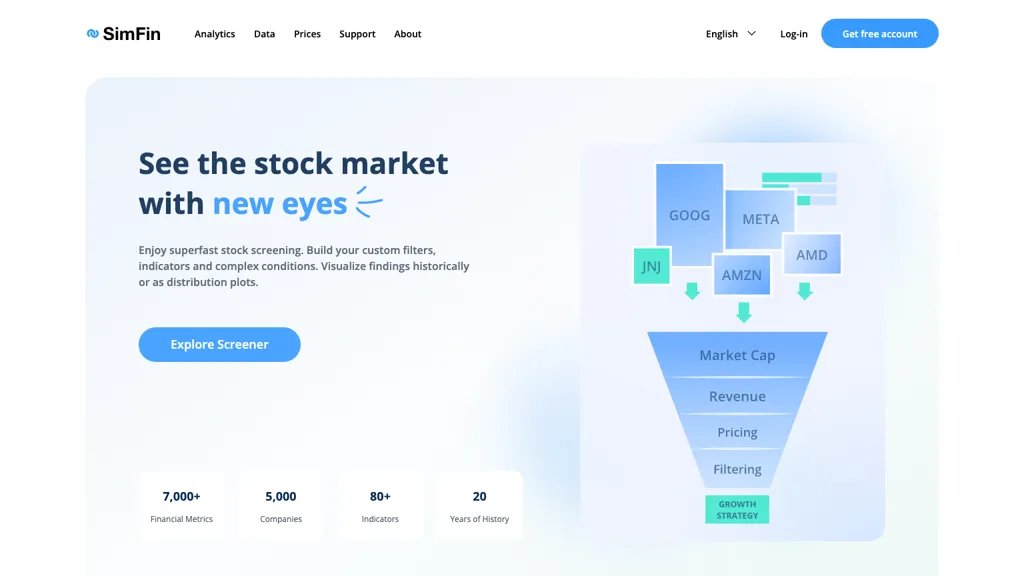20 Excellent Reasons On Choosing AI Stock Predictions Analysis Websites
20 Excellent Reasons On Choosing AI Stock Predictions Analysis Websites
Blog Article
Top 10 Suggestions On How To Evaluate The Integration Of Ai Platforms For Stock Prediction And Analysis And Their Compatibility
When evaluating AI trading platforms, compatibility and integration are crucial aspects. A platform that seamlessly integrates with your existing tools, systems, and workflows can significantly enhance efficiency and productivity. Here are the top ten tips for assessing integration and compatibility.
1. Check Brokerage Integration
Check that your platform works seamlessly with the brokerage or trading service you prefer.
Trade execution: Ensure that the platform offers direct execution of trades through the broker that is integrated.
Account synchronization: Determine if the platform can sync the balances of your account, positions and the history of transactions in real-time.
2. Assessment of API availability
API access: Ensure that the platform has an API (Application Programming Interface) that allows developers to develop customized tools and automate workflows.
API documentation: Review for examples of how the API can be used.
Rate Limits: Check the API's rate limits to ensure they're reasonable and can accommodate your expected usage.
3. Verify the Integrity of Third-Party Tools
Popular tools: Find out whether your platform is compatible with well-known tools such as Google Sheets or Excel.
Import and export of data. Make sure your platform can import and export data easily from other tools.
Extensions/Plugins: Make sure your platform can support extensions and plugins that can provide additional functionality.
4. Test Compatibility with Operating Systems
Desktop compatibility: Ensure that the platform is compatible with your OS of choice (Windows, macOS or Linux).
Mobile compatibility: Find out if the platform offers mobile apps for iOS as well as Android.
Access via the internet (for greater flexibility): Verify that the platform is accessible via an internet browser.
5. Evaluating Data Integrity Capabilities
Data sources: Make sure whether the platform is compatible with multiple data resources (e.g. market data providers or news feeds).
Real-time analytics: Ensure that your platform supports real-time analysis.
Check to see if your platform supports the import of historical data for analysis or backtesting.
6. Cloud and On Premise Compatibility
Cloud-based platforms: Ensure the platform is accessible from anywhere with an internet connection.
Solutions on-premise: If you prefer to deploy on premises, check whether the platform is compatible with it.
Hybrid alternatives: Find out whether the platform has an hybrid model that combines cloud and on-premise capabilities.
7. Check for Cross Platform Syncronization
Device synchronization. The platform should connect settings and data to all devices, including desktop, mobile and tablet.
Check for real-time updates to determine if any changes made by one device will be reflected immediately on the other.
Access offline - Determine whether you have access to restricted functionality or data in the event that the platform isn't online.
8. Verify the whether trading strategies are compatible
Trading strategies that are automated or algorithmic should be supported by the trading platform.
Custom indicators: Verify whether the platform supports the use of customized technical indicators or scripts.
Strategy backtesting: Check if the platform is capable of backtesting trading strategies using historical data.
9. Review Security and Compliance
Data encryption - Make sure that your system is using encryption for all data in transit as well as when it is in rest.
Authentication : Verify that the platform has authentic methods that are safe (e.g. 2-factor authentication).
Check for regulatory compliance: Make sure that the platform meets relevant regulations (e.g. GDPR, FINRA or SEC).
10. Scalability of Tests, Performance and Efficiency
Scalability: Ensure the platform can handle increasing amounts of data and users as your requirements expand.
Performance under load: Determine if the platform remains flexible during market conditions with high volatility.
Resource usage: Determine if your platform uses its system resources (CPU/memory, bandwidth) efficiently.
Bonus Tips
Feedback from users: Search for reviews and comments from users when you are evaluating the platform.
Free Trial: Test the platform's integration with the existing workflow and tools with the demo or trial.
Customer support: Ensure that the platform has robust assistance in the event of integration issues.
These suggestions will assist you to evaluate the compatibility and integration capabilities of AI analysis and stock prediction platforms. This will ensure that they integrate seamlessly with your current systems and increase your trading efficiency. Read the top ai trading tools for website info including best ai stock, ai stock trading app, best ai stock, ai for trading, ai investing, incite, stock ai, ai stock, chatgpt copyright, ai stocks and more.
Top 10 Tips To Assess The Transparency Of Ai Stock Predicting Trading Platforms
Transparency can be an important element in evaluating AI trading and stock prediction platforms. Transparency allows users to trust platform operations, understand the decisions made, and validate the reliability of forecasts. Here are 10 tips for evaluating the transparency of platforms.
1. AI Models are explained in detail
Tip Check to see whether the platform provides an explicit description of the AI models, algorithms, and platforms used.
What's the reason? By understanding the technology, users can evaluate its reliability and drawbacks.
2. Disclosure of data sources
TIP: Make sure the platform is able to disclose its data sources (e.g. historic stock information or social media).
The platform uses reliable and complete data when you have access to the sources.
3. Performance Metrics, Backtesting and Results
TIP: Ensure there is transparency in reporting performance metrics (e.g. accuracy rates and ROI) and the backtesting results.
The reason: Users can test the efficiency of an application by examining its previous performance.
4. Real-time updates and Notifications
TIP: See if you receive real-time notifications as well as updates regarding trading, predictions or other modifications to the system.
Reason: Real-time transparency allows users to be informed of every critical action.
5. Transparent Communication on Limitations
Tips: Ensure that the platform is transparent about the dangers and limitations of their trading strategies and forecasts.
What's the reason? Acknowledging limitations builds trust and helps you make better decisions.
6. Raw Data Access for Users
Tip : Determine if you are able to access raw data as well as intermediate results, which are used to build AI models.
Why: Users can perform their own analysis using the raw data as well as validate their predictions.
7. Transparency of Fees and Costs
Be sure that the platform clearly outlines all subscription fees and hidden costs.
Transparent pricing reduces the chance of unexpected expenses, and fosters confidence.
8. Regularly scheduled reporting and audits
Tip: Check if the platform regularly releases reports or is subject to audits by a third party to validate its operations and performance.
The reason: Independent verification increases credibility and ensures accountability.
9. Explainability and Predictions
Tip: Check if the platform offers information about how predictions or recommendations (e.g. importance of feature and decision tree) are created.
Why? Explainability lets users to learn the reasoning of AI-driven decisions.
10. Feedback and Support Channels for Users
Tip. Check if there are any channels that can be used for user feedback, support and transparency in response to user concerns.
What is the reason: Effective communications show a commitment towards openness and user satisfaction.
Bonus Tip Regulatory Compliance
Make sure the platform adheres to and is open about its compliance with financial regulations. It will increase transparency and credibility.
Through analyzing these features, you can determine if an AI trading platform and predictions of stocks are reliable. Then, you will be able to make well-informed decisions and gain confidence in the capabilities of AI. View the top rated web site for website recommendations including ai in stock market, how to use ai for copyright trading, trading ai tool, ai share trading, best ai stocks, can ai predict stock market, investing with ai, free ai tool for stock market india, ai options trading, ai tools for trading and more.